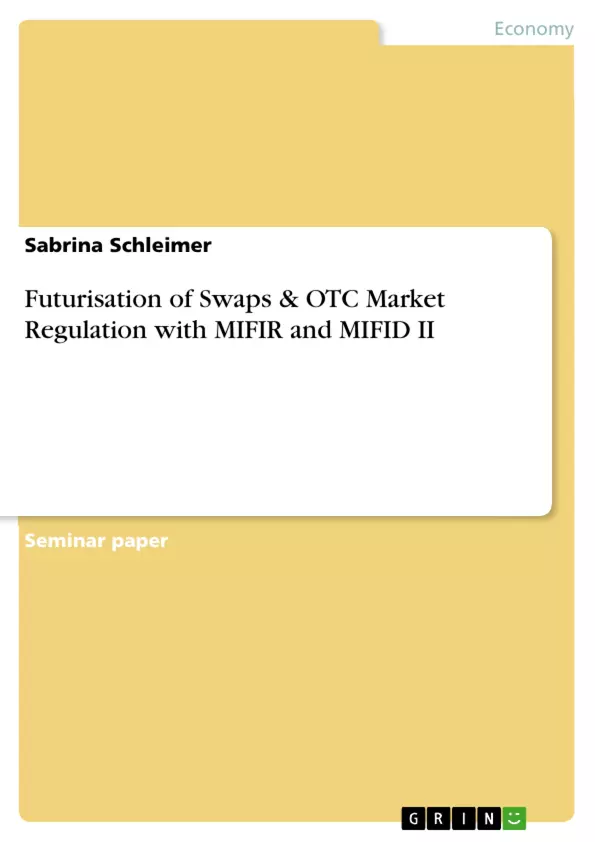The necessity of increased stabilisation and regulation of financial markets, especially over-the-counter markets, has received increased international attention following the financial crisis of 2007-08.1 Previously, swap markets were largely ‘in the dark’ when compared to exchange traded derivatives. The reactionary regulation, the Dodd-Frank Act, has severely tightened the OTC swaps markets through standardisation, increased collateral requirements and reporting standards and a more refined clearing mandate; to continue our analogy, it has sought to bring the swaps market into the light. Due to this increased regulation and subsequent increased costs associated with trading swaps, large swathes of swap trading migrated onto futures exchanges, in a process known as swap futurisation. This offered market participants regulatory certainty as well as a reduction in some of the more onerous costs and requirements under the Dodd-Frank Act. With eight years of trading under the Dodd-Frank regulation, our investigation into the advantages and disadvantages of swap futurisation will focus on trends seen in American data. Following on we will look more closely at the European Union’s response, namely the Markets in Financial Instruments Directive II and the Markets in Financial Instruments Regulation.
Inhaltsverzeichnis (Table of Contents)
- Introduction
- Futurisation of swaps
- Advantages
- Reduced initial margin
- Greater transparency
- Lower block size threshold
- Disadvantages
- Systemic Risk - the downside of Reduced Initial Margin
- Could lower block thresholds potentially harm transparency?
- Suboptimal Hedging
- Advantages
- Regulation of OTC markets
Zielsetzung und Themenschwerpunkte (Objectives and Key Themes)
This paper examines the advantages and disadvantages of the futurisation of swaps in the context of increased regulation of over-the-counter (OTC) markets. It focuses on the impact of regulations such as the Dodd-Frank Act in the US and MiFID II and MiFIR in the EU.
- The impact of increased regulation on OTC swaps markets
- The advantages and disadvantages of swap futurisation
- The role of central clearing houses and systemic risk
- The implications of futurisation for market transparency and price discovery
- The challenges of hedging with swap futures and the issue of basis risk
Zusammenfassung der Kapitel (Chapter Summaries)
- Introduction: This chapter outlines the need for increased regulation of OTC markets in the wake of the 2008 financial crisis. It introduces the concept of swap futurisation, which has emerged as a response to tighter regulations.
- Futurisation of swaps: This chapter explores the advantages of swap futurisation, including reduced initial margin requirements, greater transparency, and lower block size thresholds. It also discusses the disadvantages, such as systemic risk associated with reduced margin, potential harm to transparency from lower block thresholds, and suboptimal hedging strategies.
- Regulation of OTC markets: This chapter provides a brief overview of the regulatory landscape for OTC markets, highlighting the evolution from MiFID I to MiFID II and MiFIR. It discusses the role of the G20 in driving regulatory reform and outlines key initiatives implemented in various jurisdictions.
Schlüsselwörter (Keywords)
This paper explores the key concepts of swap futurisation, OTC market regulation, Dodd-Frank Act, MiFID II, MiFIR, systemic risk, transparency, price discovery, hedging, basis risk, and central clearing houses.
- Quote paper
- Sabrina Schleimer (Author), 2018, Futurisation of Swaps & OTC Market Regulation with MIFIR and MIFID II, Munich, GRIN Verlag, https://www.grin.com/document/437647



